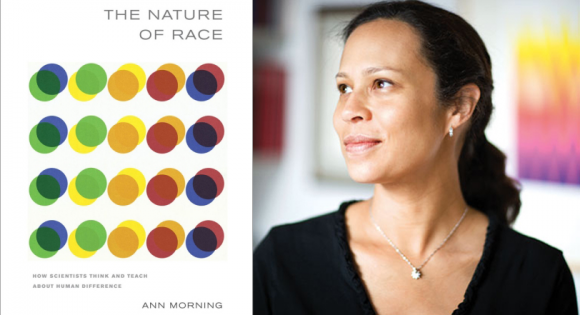A native New Yorker, Ann Morning is an associate professor of sociology at New York University and the author of The Nature of Race (University of California Press, 2011). In this essay she explores race and its categories in historical perspective.
“Race” is a familiar, everyday word for Americans, one that we routinely come across when we open a newspaper or fill out a form. Yet there is no scientific consensus about what exactly the term denotes. As I report in The Nature of Race: How Scientists Think and Teach about Human Difference, even academics within the same discipline, like biology or anthropology, disagree on how best to define the concept of race.
The scholarly debate hinges on whether races are groupings that we human beings invent, influenced by our subjective cultural prejudices and hierarchies, or whether they are groups of people who objectively share certain physical characteristics, whether visible or invisible (e.g. genetic). Members of the former camp are often referred to as “constructivists” because of their insistence that racial categories are built or put together by human hands, while proponents of the latter perspective are often labelled “essentialists” due to their conviction that racial groupings reflect traits naturally embedded within individuals’ bodies (i.e. “essences”). To illustrate this scientific conflict with a concrete example, take the standard U.S. racial category “black.” To a constructivist, this classification has all the makings of a social construct: Over the nation’s history, there have been changing beliefs about who falls into this category (e.g. anybody with a black mother during colonial times, or anybody with any known African ancestry after the Civil War) and conflicting beliefs by region (e.g. Louisiana versus Virginia). Moreover, if we compare the United States to other countries, it is quickly apparent that someone who is considered “black” here might not be classified the same way in Latin America, Western Europe, the Middle East, or Africa. In other words, racial categorization depends a lot on the society that is doing the categorizing—which is exactly the point that constructivists wish to make. To an essentialist however, the biological sciences demonstrate that there are distinct subgroups—races—within the human species. In the past, biologists thought the telltale markers of racial type lay in such disparate physical features as skull size and shape, blood type, skin color, hair texture, eye shape, and so on. Today however the academic debate about race and biology takes place almost entirely on the terrain of genetics, where scholars argue whether DNA patterns do or do not map onto racial groupings.


